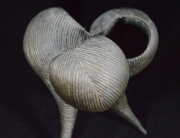On the eve of 2017, Dr. Durga Pokhrel brought up an important piece of information: the association of the New Year with Jesus Christ. Yes, it was definitely the case before the 20th century. During that time a Christian monk started the reckoning system of B.C. (before the birth of Christ) and A.D. (Anno Domini, in the year of the Lord, meaning Christ) in Europe to replace the Era of Martyrs. However, in order to separate the era from Christianity, 20th century academics and scientists opted to change it to a simple designation called the Common Era (CE), a distinctly secular term.
In light of this change, textbooks, history books, academic and scientific journals, and other contexts used simple designations of reckoning, BCE and CE; so now BCE stands for Before Common Era and CE stands for Common Era. The rationale for switching to this designation was that the Gregorian calendar is used all over the world in computation and other purposes, albeit some countries like Nepal still use their own local eras, as you mentioned in your post.
As you know, Saudi Arabia, the birth place of the Prophet Mohammad, has been using Hijrah. This is based on the flight of the Prophet Mohammad from Mecca to Medina in 622, counting it Hijrah 1. Like the Nepali calendar, Hijrah is lunar-based. According to Islamic Hijrah, it’s 1438, whereas it is year 2074 in Nepal according to Vikram Samvat. Yes, Nepal is ahead of Hijrah and the Common Era. However, Nepal isn’t the only country whose calendar is ahead of Gregorian reckoning; it’s 2559 in Thailand, 2628 according to Kurdish tradition, and 5776 according to Jewish Knesset.
I just read that the crown prince of the Kingdom of Saudi Arabia decided to switch Hijrah to the Gregorian calendar starting in 2017, marking a leap into the future. Welcome to 2017, the Common Era, to which even the Kingdom of Saudi Arabia is turning to for a change. Happy 2017 CE to all.









Leave A Comment